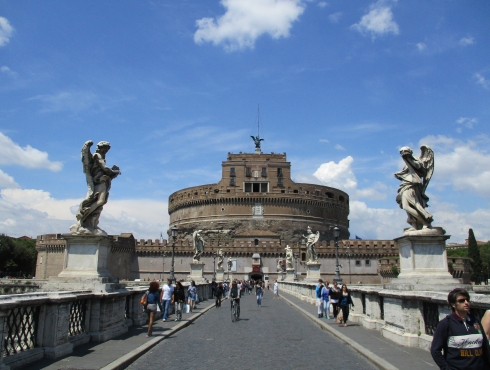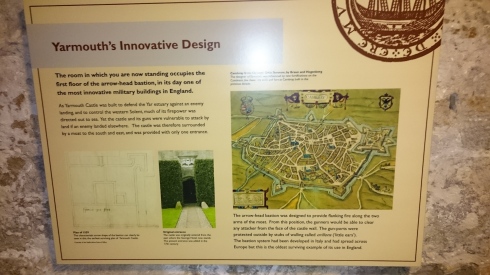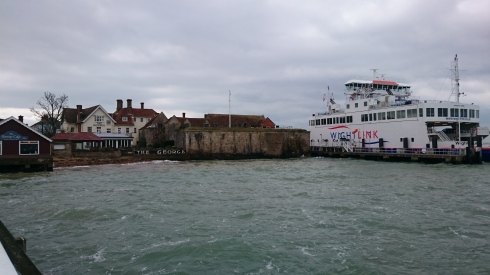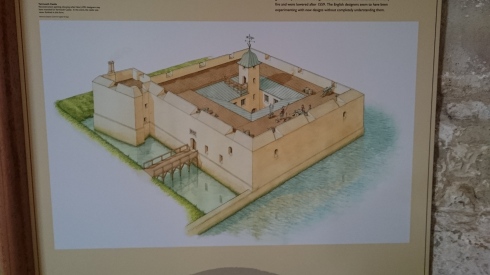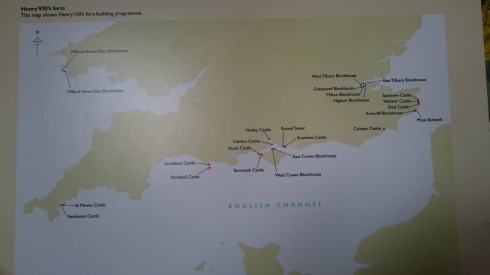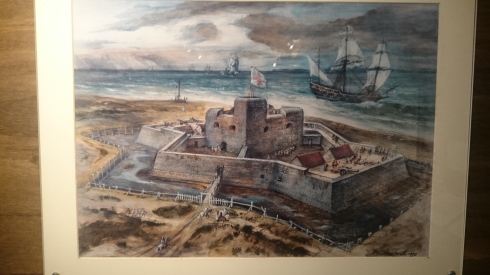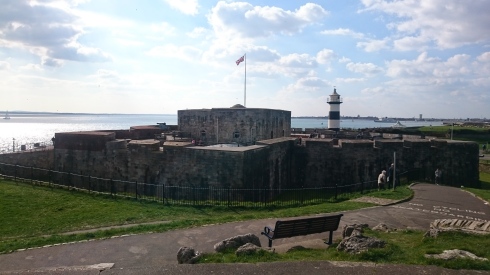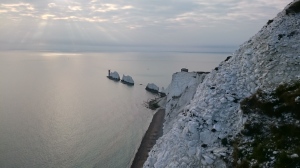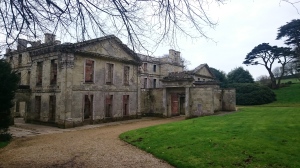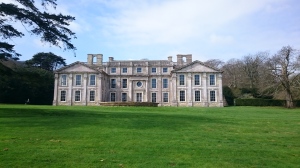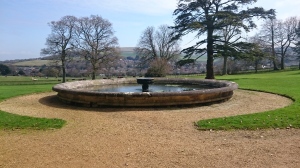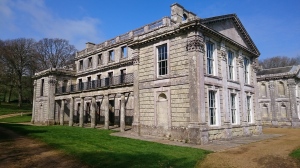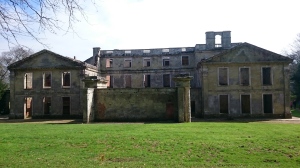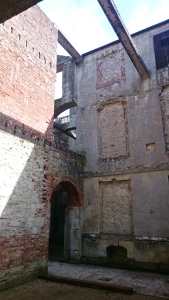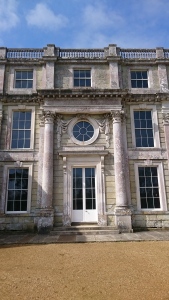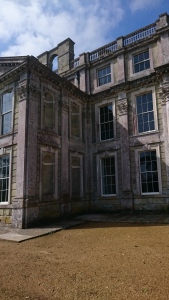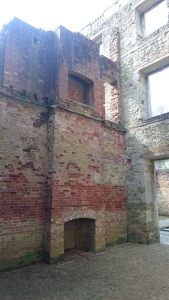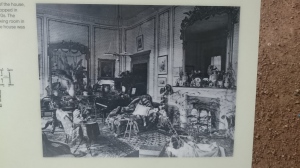With a loud crack of thunder, the heavens opened. The ferocity of the deluge sent victims scattering for shelter. The morning’s blazing sunshine had lulled us into a false sense of security. As such, it was thin tops and carrier bags hurriedly commandeered as hoods and umbrellas. The high, stone walls provided little cover, so we skittishly hopped from one closed doorway to the next, exchanging a few inches of shelter for another. Criss-crossing the courtyard in this manner, I eventually reached the bowels of the ancient building.
We weren’t the first to use this aged structure for sanctuary. There exists an underground tunnel connecting it to the Vatican. In 1527 the German Emperor, Charles V, and his forces sacked Rome. You might imagine a faithful pope would stand firm in Christendom’s holiest site. Trusting his fate to God. Instead, Pope Clement VII hitched up his robes and scurried down the tunnel to safety. Three-quarters of his elite Swiss Guards died defending his escape. Clearly Clement wasn’t a strong believer in Jesus’ proclamation ‘Do not be afraid of those who kill the body but cannot kill the soul…’
Rain. The tourist’s bane. Now safely sheltered, I stood at the mouth of a stone corridor eyeing the dismal drizzle’s dogged descent. Fellow tourists would periodically rush down the metal steps in search of sanctuary. The corridor led from an open courtyard deep into the bowels of the ancient fortress. We gathered at the entrance, eyes to the skies, waiting for a break in the bleak blanket.
There’s another famous pope-related story associated with this place. This pope wasn’t escaping an attack; he was initiating one. In 590 St. Gregory the Great had a vision of an angel unsheathing a sword atop the building. He interpreted it as a sign of an end to the plague which had gripped the city. The vision inspired him to lead a procession to the church of Santa Agata in Surburra. Upon arrival a sudden clap of thunder supposedly caused an idol to miraculously fall apart.
Upon his return, Gregory the Great saw another vision of the angel wiping blood from his sword before sheathing it. The pope interpreted this as a sign that God was appeased, although, that didn’t stop him destroying numerous other sites around the city. A more prosaic explanation for his actions was told by a 15th-century traveller. He claimed that, in response to the ongoing plague, Rome’s populace had begun worshipping pagan idols in desperation. So Gregory destroyed them. Either way, it was this purported event that gave the building its current name: Castel Sant’Angelo – literally translated as ‘Saint Angel Castle’ – in honour of the angel.
Time wore on and the rain poured down. It was the type of downpour where thirty seconds exposure meant soaked to the bone. The rain’s solemn drumbeat marked the frustrating passing of wasted time. For the moment, my busy itinerary had to be put on hold. But I wasn’t the only one. Quite a gathering had amassed at the courtyard entrance. Our glum looks and impatient eyes fixed upon the unleashed heavens. Bored children began playing in the growing puddle that slowly oozed and slithered its way across the uneven granite floor.
I first spotted the castle as I crossed Ponte Sant’Angelo bridge. To be fair, it was hard not to. Positioned directly in front of the bridge and measuring sixty-four metres in diameter, you’d be hard pressed to miss it. It looked like a giant, stone snare drum had fallen from the sky.
By the 2nd century the Roman’s Imperial tomb was almost full with emperors and their families. Emperor Hadrian concluded a new grand tomb was required. Hadrian, and all subsequent emperors, were interred there. It was later realised that the massive construction formed an ideal base for a fortification, so by the Middle Ages the tomb had been modified into Rome’s greatest castle. The modifications were significant enough that the original Roman structure is largely unrecognisable today. It was later acquired by the papacy and used as a refuge from danger, as Pope Clement had done, but was later used as a residence. In the early 20th century it was converted into a museum, it’s purpose today. It features various exhibits of paintings, pottery and antique weaponry. Sadly, much of the tomb’s urns and ashes were trashed and scattered during a Visigoth attack in 410AD. And a later goth siege in 537AD resulted in much of the decorative bronze being looted and lost.
The rain didn’t appear to be in any rush to depart. The humidity had turned the cold, roughhewn stones clammy to the touch. I began deliberating over whether to accept my fate and brave the downpour. Typically, it was the one day I’d forgotten to take my umbrella. Numerous street sellers sold them. But the rain’s ferocity would have soaked me by the time I reached them, rendering the purchase somewhat redundant. That’s something I have to complement Italy on: The street sellers are flawlessly efficient. When the sun was shining they were loaded with selfie sticks. The moment rain struck, the sticks immediately disappeared to be replaced by umbrellas. I couldn’t understand how they managed this so swiftly. On occasions it felt like I shifted my gaze from a selfie-selling street seller to the sky, noted it had begun to rain, gazed back only to find the same street seller was now offering me an umbrella and the selfie-sticks were nowhere in sight. “How did you…do… that!?”
I clearly wasn’t the only one debating whether to accept my fate. Many dispirited eyes, eyed the grim, sodden skies. Occasionally someone would shrug in defeat and head out into the downward drift, leaving others exchanging contemplative glances. The deluge of dank droplets penetrated even the stiffest resolve.
It reminded me of long, childhood Sunday afternoons. Sat by the window waiting for a break in the rain so I could go outside to play. Time was wearing on and the sulky skies looked as tempestuous as ever. My bursting itinerary was bugging me to accept my fate. I couldn’t rely upon the castle’s protection forever.
My time in Rome was fleeting. My plans couldn’t be endlessly postponed awaiting the perfect weather. Sometimes you just have to brave the storms and make the most of it. A bit like life, I suppose. You can’t continually delay until the perfect moment arrives. You’ll never do anything. And, arguably, right now is the perfect moment, as it’s the only one you’ll ever have.
With this in mind I took a look around. The once crowded corridor had thinned considerably. The unremitting rain had eroded much staunch defiance. The wearing time had worn down my resolve too. To quote Tracy Chapman “If not now, then when?” I took a last glance at the sullen skies, shrugged my shoulders and headed out into the rain…
Millions long for immortality who don’t know what to do with themselves on a rainy Sunday afternoon. – Susan Ertz
